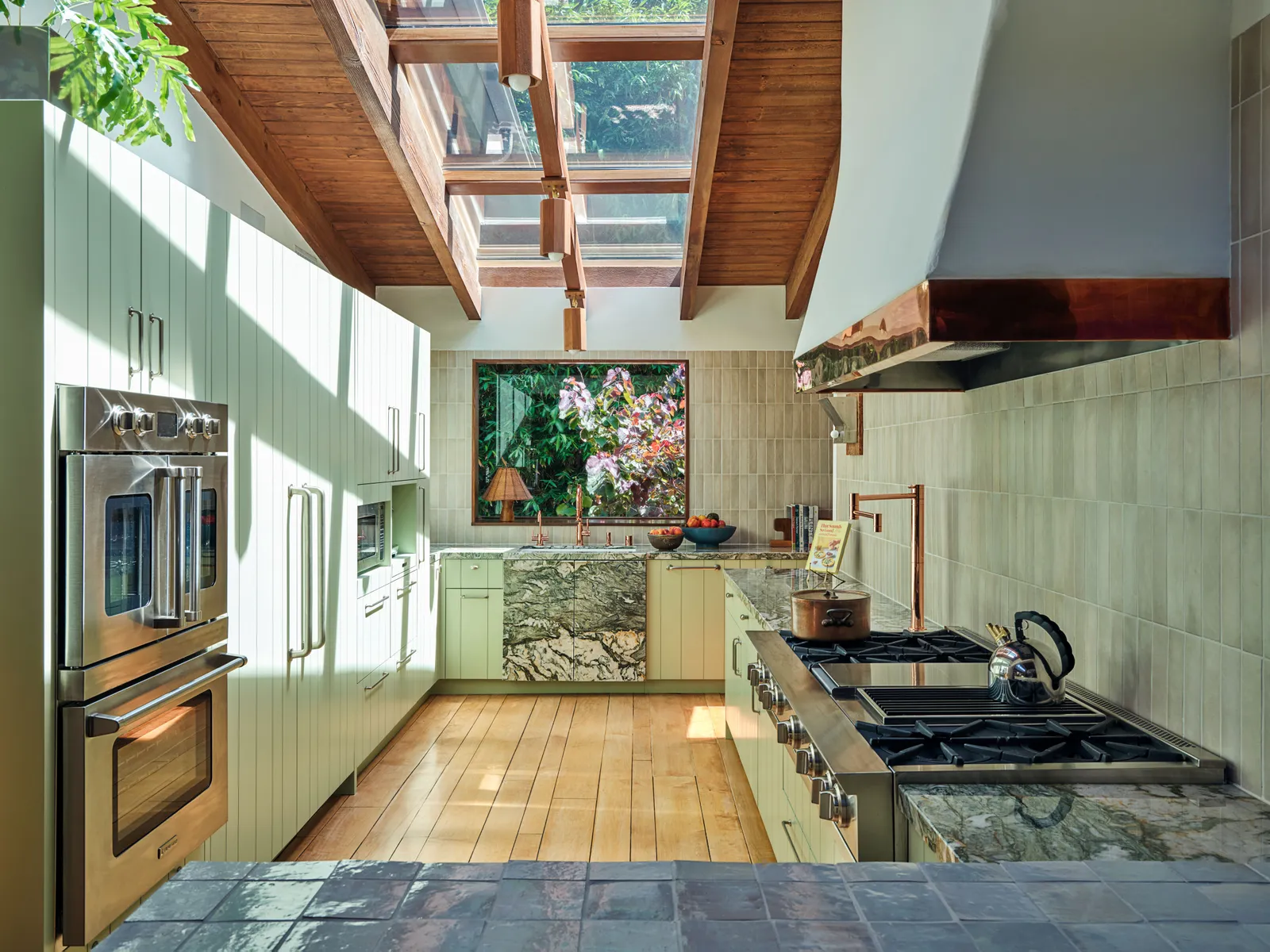By Grace Vera
When Youtube celebrity Emma Chamberlain welcomed the world to her home during an episode of Architectural Digest’s “Open Door” series, viewers were met with polished marble tiles, opulent green countertops, and a 30,000-dollar chandelier. The young star had long talked about its construction via social media. And for good reason: the newly renovated 50s-style home was an elaborate representation of the evolution of her career, from quirky high schooler to the global face of Louis Vuitton at Paris Fashion Week and the Met Gala. The video in question, “Inside Emma Chamberlain’s Radiant New Home” has amassed over seven million views since its release in September 2022.
Architectural Digest’s Open Door series, where high-profile celebrities invite a camera crew on a tour of their homes, has grown in popularity over the past few years. In its videos, household names, such as Demi Lovato, Seth Rogan, or Gwenyth Paltrow, explain their architectural and interior design choices. This series breaks away from the magazine’s traditional design focus, attracting a different sector of the public that is motivated by the intrigue garnered from attaching a celebrity name. Where the design magazine used to be filled with photographs worthy of wall art, it now heavily features the faces of the homeowners – often Los Angeles celebrities.
One episode of the Open Door series features celebrity Kendall Jenner boasting about her California home. Many viewers commented on how “down-to-earth” her space appeared, seeming even “normal.” In stark contrast to her portrayal on television, Architectural Digest brought viewers the “real” version of Jenner.
Celebrities have been able to use the Open Door series and other publicized home tours to alter their public perception. It feels like an open invitation to the viewer, and these “untouchable” celebrities seem to feel more approachable, more akin to the average person.
Until then, years of highly curated photo shoots, red-carpet outfits, and fashion shows had defined Jenner’s career. Even her rise to fame, a consequence of her family’s sudden success with the reality show “Keeping Up with the Kardashians,” had not granted her the opportunity to look even slightly “normal.” The young celebrity had frequently spoken up about the public’s invasion of her privacy. Yet, somehow, Jenner agreed to allow the media into her L.A. home, filming it almost in its entirety for over 25 million viewers to see.
Celebrities who made a point of protecting themselves from the public eye have begun to share the most intimate parts of their lives. It could be that they simply want to take control of their narrative, and portray themselves as ordinary in some way. However, they rarely succeed in doing so. In most cases, they appear to be flaunting their wealth, making the whole ordeal seem like a manufactured attempt at making the viewer feel closer to them, as though they too could attain what the star has.
Showing off these opulent homes has become less about appreciating their design, and more about the celebrity that owns them. Certainly, some people still watch these videos hoping to glean some design inspiration, but they represent a small fragment of the general viewership.
Architectural Digest has shifted largely towards its online presence. In the process, a new audience with limited artistic knowledge has been attracted via Tik Tok and Youtube, captivated by clickbait. Viewers flock to judge and analyze the details of Emma Chamberlain’s home, giving the magazine more of a “Hollywood Reporter” reputation. A long-time leader in the public discourse around home design, the shifting attitude of Architectural Digest is now pushing the idea that a beautiful home is a product of wealth and fame. Videos like the Open Door series tend to focus on the homeowner: their status, style, and, most importantly, the meticulously crafted image by which they wish to be portrayed.
Some have pointed out that many of these celebrities, including Emma Chamberlain, end up giving viewers a false sense of hope about their own future homes, simply through which pieces they choose to show in their Open Door video. Instead of focusing on the table worth a whopping $100,000, Chamberlain repeatedly mentions her thrift finds and one-of-a-kind purchases on the second-hand online store, Etsy. In the video, she points to Russian nesting dolls picturing The Beatles and a set of hand-painted vintage tea tins, all second-hand.
The deliberate pairing of decadent furniture with personal items the viewers may be able to purchase makes the celebrities relatable. It lets the public imagine themselves in their shoes, decorating million-dollar houses in their style. They dream about where they can place their own set of ABBA Russian nesting dolls and that one multicolored mirror from that second-hand shop they liked, which serves the original intention of the magazine—to provide design inspiration.
On the surface, this appreciation for personalized, one-of-a-kind items seems to add new discourse to the design world. But it can end up harming viewers when celebrities are not transparent about the massive amounts of wealth around them. Even the most cynical of viewers become swept up in dreams of lavishness, dreaming of homes out of their reach.
Not only can viewers become deceived by the unattainable, but the constant discourse around who has the most tastefully designed home in Hollywood is tainting the image of the magazine. The evolution of its covers over the years shows how much it has come to cater to the celebrity image. Pages of elegantly designed living rooms from the covers of the 1920s drastically oppose today’s photoshoots of celebrities confidently posing by their front doors.
Have we lost appreciation for classical architectural design in the name of praising wealth and fame? The rise in popularity of celebrity house tours seems to suggest so. The world of home design, at least in the public’s eye, has become almost entirely about Dakota Johnson’s olive green kitchen and the “homey” perception it gives her, and less about simply appreciating good design.
Other posts that may interest you:
Discover more from The Sundial Press
Subscribe to get the latest posts sent to your email.





